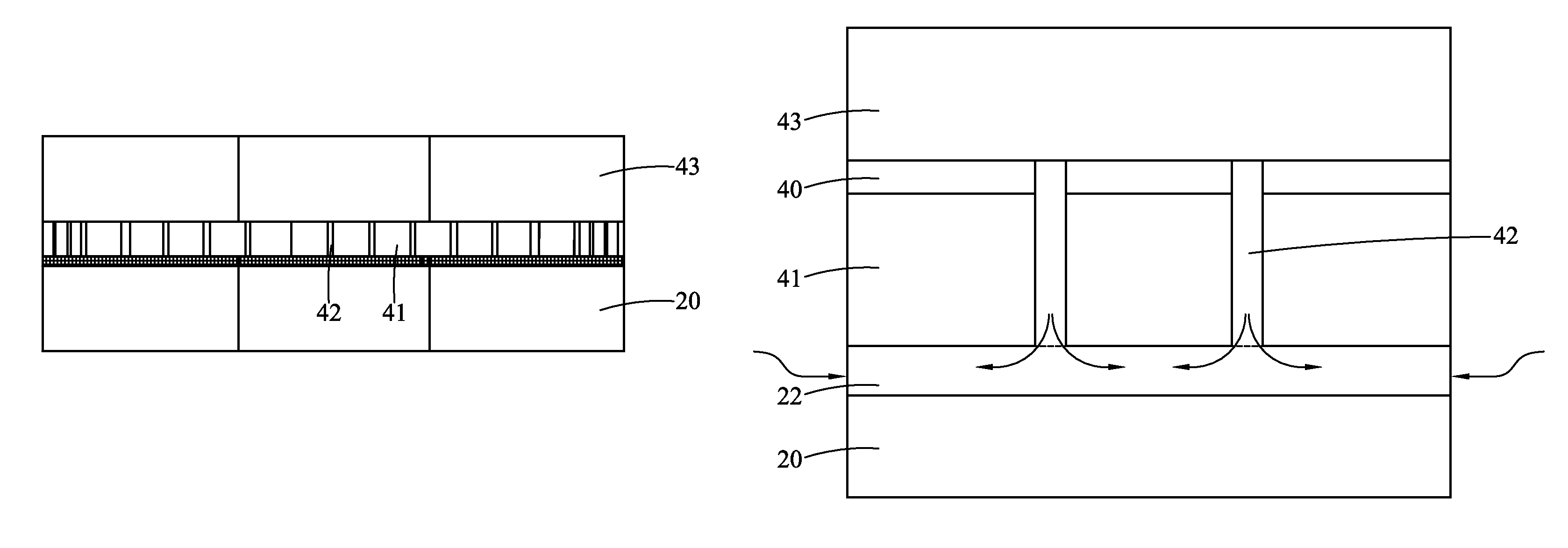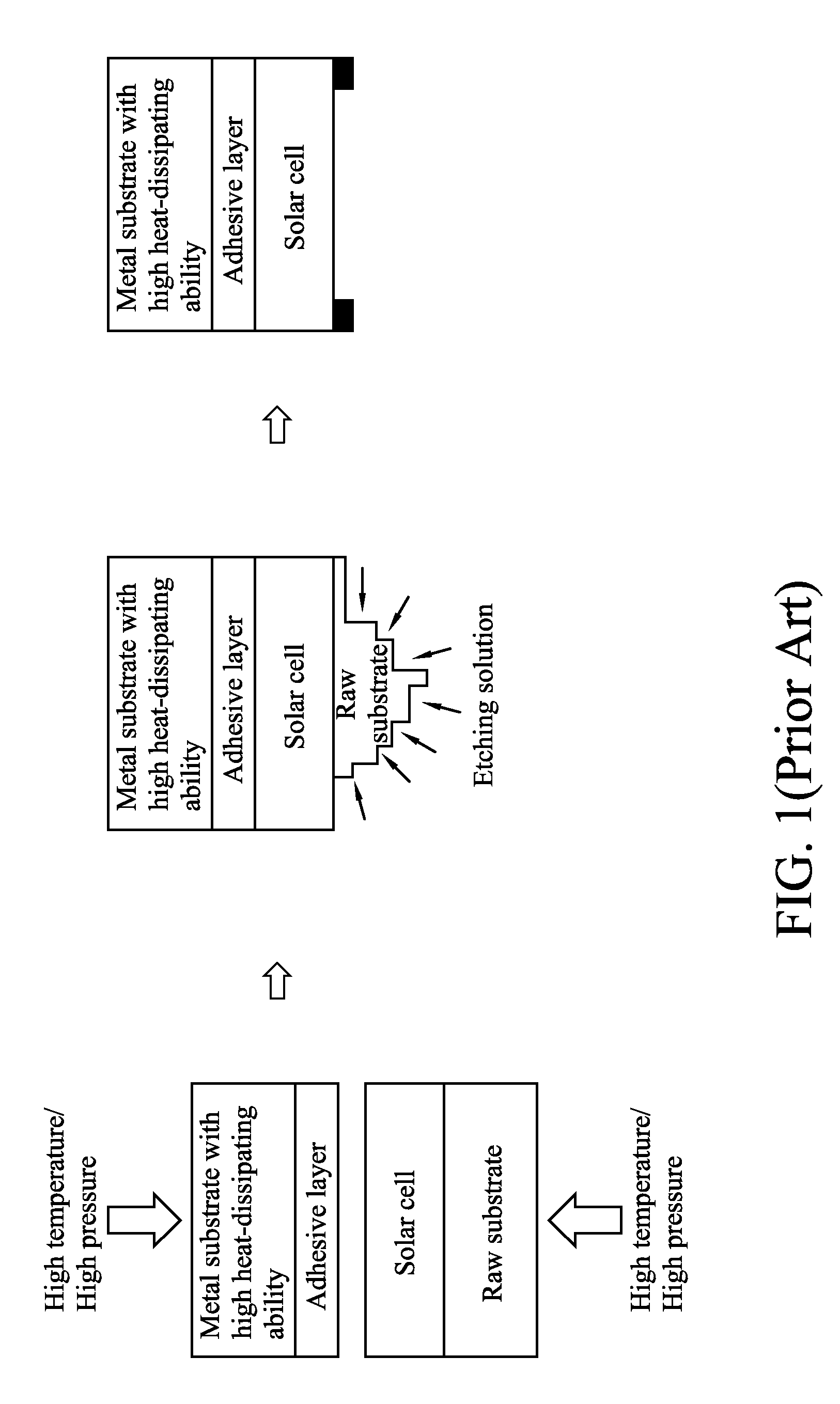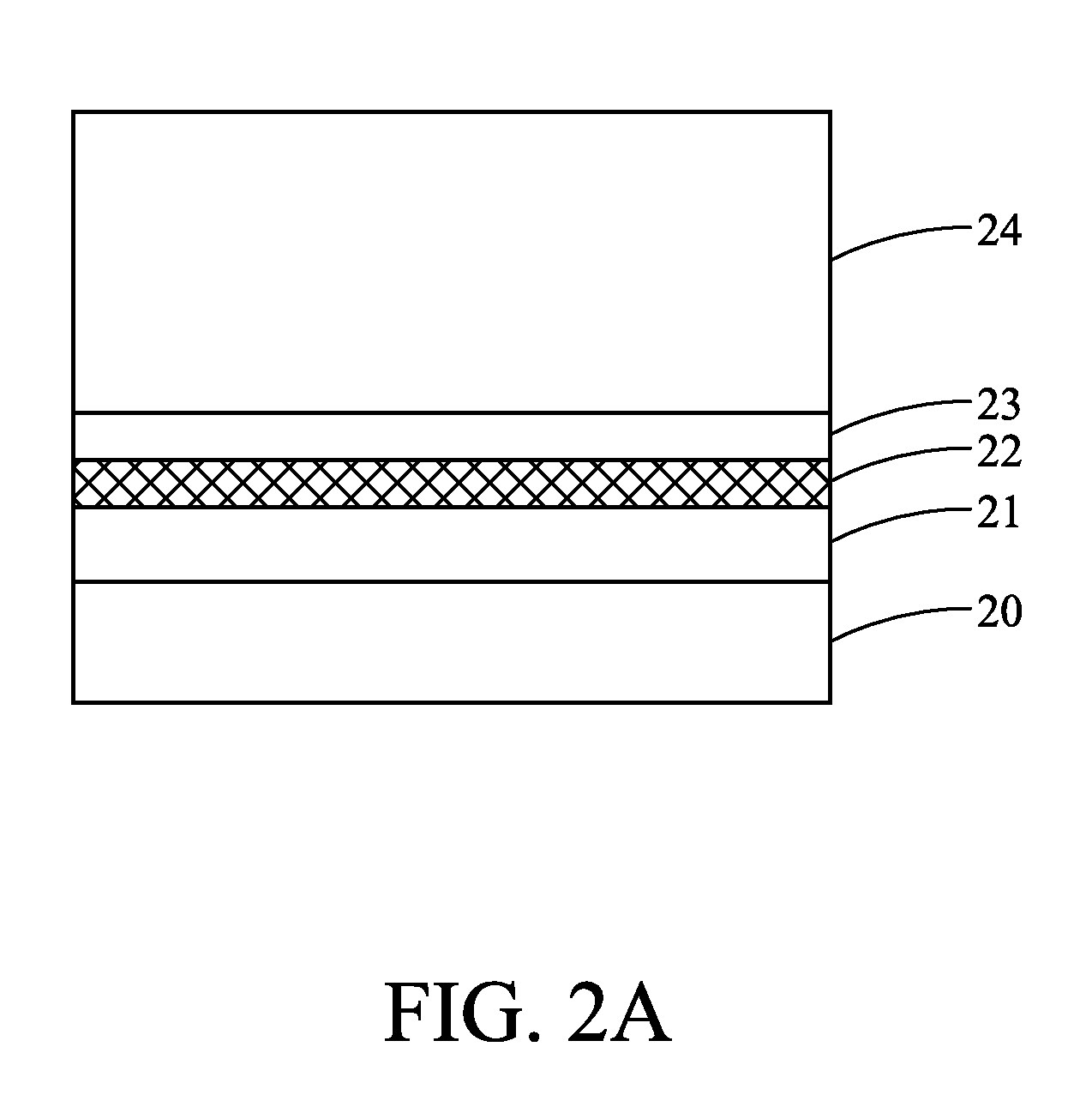Lift-off structure for substrate of a photoelectric device and the method thereof
a photoelectric device and lift-off technology, which is applied in the direction of solid-state devices, semiconductor devices, electrical devices, etc., can solve the problems of adverse effects on current-voltage characteristics of solar cells, deterioration of conversion efficiency of solar cells, and inability to recycle and use raw substrates, so as to improve the adverse effect of capillary action
- Summary
- Abstract
- Description
- Claims
- Application Information
AI Technical Summary
Benefits of technology
Problems solved by technology
Method used
Image
Examples
first embodiment
[0041]Please refer to FIG. 2A, which is a schematic diagram showing a lift-off structure for substrate of a photoelectric device according to the invention. In FIG. 2A, the present invention provides a lift-off structure, adapted for a substrate 20 having a photoelectric element 24 formed thereon, which comprises: a buffer layer 21, formed on the substrate 20, and being made of GaAs; an upper sacrificial layer 22, formed on the buffer layer 21, and being made of a material of high aluminum content, such as AlxGa1−xAs, 0.5≦x≦1; an etch stop layer 23, formed on the upper sacrificial layer 22, and being made of a quaternary III-phosphide or ternary III-phosphide, such as GaInP, AlInP, AlGaInP; and the photoelectric element 24, formed on the etch stop layer 23; wherein the substrate 20 can be made of GaAs; and the photoelectric element 24 can substantially be a device selected from the group consisting of: a solar cell, a light-emitting diode, and a p-n junction device.
second embodiment
[0042]Please refer to FIG. 2B, which is a schematic diagram showing a lift-off structure for substrate of a photoelectric device according to the invention. In FIG. 2B, the present invention provides a lift-off structure, adapted for a substrate 20 having a photoelectric element 24 formed thereon, which comprises: a buffer layer 21, formed on the substrate 20, and being made of GaAs; an upper sacrificial layer 22, formed on the buffer layer 21, and being made of a material of high aluminum content, such as AlxGa1−xAs, 0.5≦x≦1; an etch stop layer 23, formed on the upper sacrificial layer 22, and being made of a quaternary III-phosphide or ternary III-phosphide, such as GaInP, AlInP, AlGaInP; a lower sacrificial layer 25, formed on the etch stop layer 23, and being made of a material of high aluminum content, such as AlxGa1−xAs, 0.5≦x≦1; and the photoelectric element 24, formed on the lower sacrificial layer 25, being substantially a device selected from the group consisting of: a sol...
third embodiment
[0043]Please refer to FIG. 2C, which a schematic diagram showing a lift-off structure for substrate of a photoelectric device according to the invention. In FIG. 2C, the present invention provides a lift-off structure, adapted for a substrate 20 having a photoelectric element 24 formed thereon, which comprises: a buffer layer 21, formed on the substrate 20, and being made of GaAs; an etch stop layer 23, formed on the buffer layer 21, and being made of a quaternary III-phosphide or ternary III-phosphide, such as GaInP, AlInP, AlGaInP; a lower sacrificial layer 25, formed on the etch stop layer 23, and being made of a material of high aluminum content, such as AlxGa1−xAs, 0.5≦x≦1; and the photoelectric element 24, formed on the lower sacrificial layer 25; wherein the substrate 20 can be made of GaAs; and the photoelectric element 24 can substantially be a device selected from the group consisting of: a solar cell, a light-emitting diode, and a p-n junction device.
[0044]Please refer to...
PUM
 Login to View More
Login to View More Abstract
Description
Claims
Application Information
 Login to View More
Login to View More - R&D
- Intellectual Property
- Life Sciences
- Materials
- Tech Scout
- Unparalleled Data Quality
- Higher Quality Content
- 60% Fewer Hallucinations
Browse by: Latest US Patents, China's latest patents, Technical Efficacy Thesaurus, Application Domain, Technology Topic, Popular Technical Reports.
© 2025 PatSnap. All rights reserved.Legal|Privacy policy|Modern Slavery Act Transparency Statement|Sitemap|About US| Contact US: help@patsnap.com



